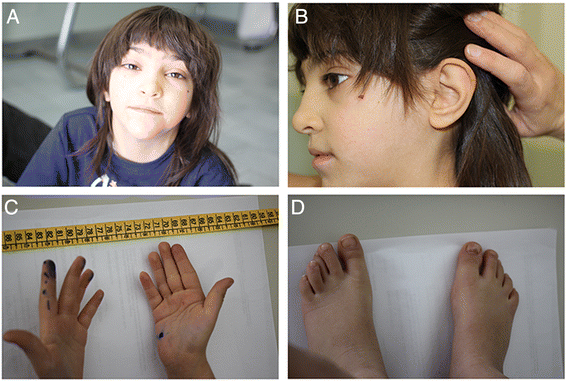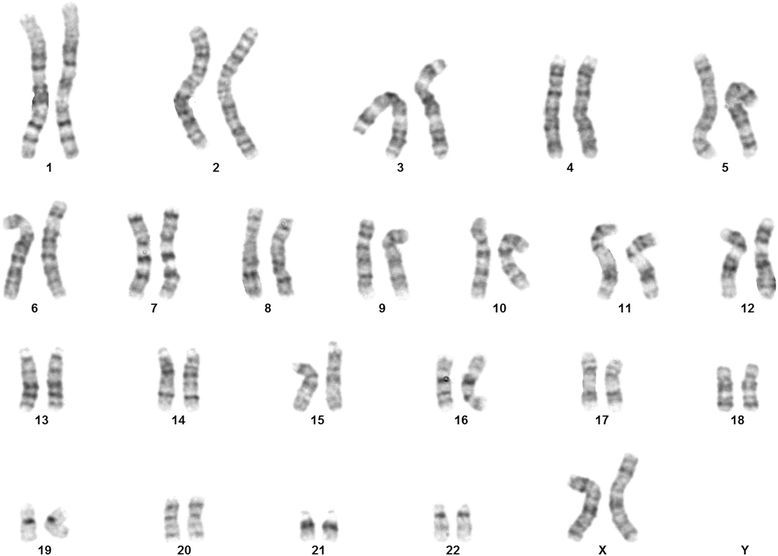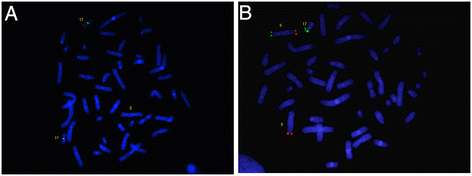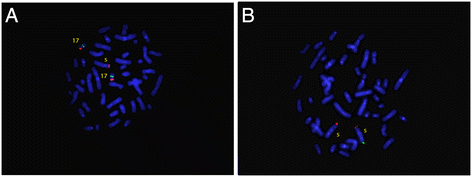A cryptic balanced translocation (5;17), a puzzle revealed through a critical evaluation of the pedigree and a FISH focused on candidate loci suggested by the phenotype
- PMID: 26336513
- PMCID: PMC4557763
- DOI: 10.1186/s13039-015-0172-1
A cryptic balanced translocation (5;17), a puzzle revealed through a critical evaluation of the pedigree and a FISH focused on candidate loci suggested by the phenotype
Abstract
We report a case of a woman with a cryptic balanced translocation between chromosomes 5 and 17, suspected during genetic counseling. The woman had a history of previous fetal losses attributed to lissencephaly and intra uterine growth retardation (IUGR) and a daughter with dysmorphic features and mental retardation, previously attributed to a small deletion 5pter, detected years ago by a first generation CGH-array. This peculiar combination of personal and family history suggested the opportunity to carry out a FISH approach, focusing on chromosomes 5 and 17, based on the idea that a malsegregation secondary to a balanced translocation, might have escaped the first CGH array. This approach allowed the identification of a balanced translocation in the mother, FISH in the affected child confirmed the partial 5p deletion predicted by the previous CGH array and identified a new 17p duplication that had not been detected before. The described translocation opens the possibility of alternative imbalances that were probably responsible for previous fetal losses. The imbalances were confirmed by a new high resolution SNP array. We conclude that despite the availability of highly effective and sensitive genomic approaches a careful evaluation of medical history is highly recommended since it can suggest clinical hypothesis that can be confirmed by more classical and molecular cytogenetic based approaches.
Figures





References
Publication types
LinkOut - more resources
Full Text Sources
Other Literature Sources

